How Do You Know When It’s Time to Officially End the School Year for Your Homeschool?
Your official last day of school can be whenever you want—so pick a date that matches your family’s homeschool rhythm (or don’t pick a date and have a year-round homeschool).
Your official last day of school can be whenever you want — so pick a date that matches your family’s homeschool rhythm (or don’t pick a date and have a year-round homeschool).
OK, this may be a stupid question, but how long should our homeschool year be? This is our first year homeschooling, and I’m not sure how to know when it’s time for summer vacation.
I’m actually a terrible person to answer this question — when we started homeschooling (in the middle of my daughter’s 2nd grade year), I was so indecisive about when to stop that we ended up becoming year-round homeschoolers. We just kept going until September rolled back around. It worked, so we’ve been doing it ever since. But maybe that also makes me a good person to answer this question because I can honestly say that you can make your year as long as you want to.
Some states require homeschoolers to log a certain number of learning days each year, so of course you want to make sure that if your state has such a requirement, your homeschool plan meets it. Beyond that legal essential, though, deciding when to declare it summer in your homeschool is up to you.
Some curricula make this easy. When you finish them, you can close up shop and call it a year for math or history. That’s easy if your students generally keep pace with the curriculum, but if your child works faster or slower or if she’s faster in some subjects and slower in others, it can be trickier: If you finish one book in January, it makes sense to start a new one, but what if you finish in April? Or what if it’s August, and you’re still plugging away at history?
It might be simplest to just pick an official date as your “last day of school” — your homeschool’s “last day of school” might match up to the date your local school closes or be the week your pool opens or just be the first day May — and say “This is when our year ends.” Bookmarks go into unfinished curriculum, evaluations get written, and you clean up the school stacks. That doesn’t mean you shut down learning, obviously. Homeschooling is a year-round process, whether you put the books away for the summer or not, but you can set a date to stop doing structured learning time unless a kid specifically requests it.
You can also follow my lead and just keep a casual homeschool going year-round. The benefit to year-round homeschooling is that it’s easy to introduce new books and curricula as they become appropriate, and you always know that you can go as fast or as slow as you want without worrying about a deadline. (The downside is that you miss out on all those “New curriculum!” photos in late summer — though personally, just buying things as we need them has worked out pretty well for me.) A year-round homeschool doesn’t mean you’re always “doing school;” you just spread breaks out through the year, so you might take a month off to watch the Olympics or a week off for birthdays.
However you decide to end your academic year, make sure you pause to celebrate your success. One of my friends makes a cake with her kids to mark the end of the great year; we usually plan a pancakes-and-pool-day fiesta at the end of summer to celebrate starting a new grade. When you decide to start and stop isn’t really important, so if you try something this summer that doesn’t feel right, you can adopt a different practice next year. Just like every other part of homeschooling, knowing how your annual schedule runs is something that you’ll figure out for your family one year at a time.
My Practically Free Guide to Getting Started Homeschooling Elementary School
This is my go-to recommendation for new homeschoolers — it's designed to help you find your rhythm, build comfort with leading your students’ learning, and keep the learning going as you find your way. It’s basically a six-month, low-cost-investment guide to starting homeschooling.
Every summer, I get email from people who are trying to find the “perfect curriculum” for their brand-new homeschools, but the truth is, you probably won’t know what a perfect curriculum actually looks like for your family until you get through a few months of homeschooling. Homeschooling is partly about curriculum, but it’s also about understanding how your kids learn, what your family’s daily rhythm feels like, and what you’re actually willing to do every week to get ready for your family’s learning life.
That’s why I always recommend that new homeschoolers wait six months before making any major curriculum purchase. That’s really how long it takes most people to settle into homeschooling enough to know what you really need in a curriculum — which may turn out to be different from what you think you want when you first get started. It also lets you test-drive being a homeschool parent — which often involves different kinds of effort that new homeschoolers might expect. This sounds intimidating, but for elementary school, it’s SO EASY. This is my go-to recommendation for new homeschoolers — it's designed to help you find your rhythm, build comfort with leading your students’ learning, and keep the learning going as you find your way. It’s basically a six-month, almost-free guide to starting homeschooling. (As with all homeschool projects, you’ll have to spend money or time to get quality curriculum — this is low-cost, so it asks for a not-insignificant parent-time investment. I don’t think there’s any curriculum that’s almost free, hands-off, and a great educational choice, but two out of three isn’t bad!)
What you need:
A readaloud (You can choose any chapter book that you’re excited about, but some of my favorite starter-readaloud recommendations are: The Adventures of Nanny Piggins, The Pepins and Their Problems, The Vanderbeekers of 141st Street, or The Adventures of Pippi Longstocking, all of which are sometimes laugh-out-loud funny.)
A non-fiction book for history (There are lots of good ones, but The People Shall Continue makes a really good spine for Native American studies, A Child’s Introduction to African American History is a great take on U.S. History, or explore life in medieval times with Good Masters! Sweet Ladies! Voices from a Medieval Village. Choose one book as your focus.)
I don’t recommend buying math for the first months of your homeschool; instead, take this opportunity to test out different math options by using sample lessons. Math can be one of the trickiest curriculum buys because kids learn math in such different ways, so give your student a chance to play with several different curricula these first months. It will become clear which are better and worse fits. It will also give you an idea of what level to start with! If you spend a week on each sample lesson, this should get you through at least 10+ weeks. I’d try:
Beast Academy (this link takes you to the books, but check out the online samples, too — look for the downloads in the right sidebar of the page for the book you’re interested in)
Singapore Dimensions (click on the grade level to see the samples for that book)
Math Mammoth (the downloads are in the right sidebar)
Teaching Textbooks (scroll all the way to the bottom for the sample lessons)
Organizing your day:
Most days, start with nature journaling. Buy a notebook, and check outside to record the date, weather conditions, and one nature observation. Do an activity in The Nature Connection workbook a couple of times a week — many of them can be done spur of the moment, but a few require a little advance planning. Aim to check out one book a week from the library about a nature topic you’ve touched on, and read it together. This is pretty low-key science, so you will want to add a little more information-based science after the first semester, but it’s a good way to get into the habit of “doing science” together.
Move on to reading: Alternate history reading and literature readings so that you start with a different subject each day, and be OK with sometimes only getting through the first one.
For literature, choose five words from what you’re reading every week or two to be your “spelling words” for the week, and practice writing and defining them. Copy them every day or two to practice spelling, and see how many different ways you can use them in a sentence. Encourage your student to summarize each chapter: What happened? Your goal is to steer them in the direction of a clear, two- or three-sentence summary, but this can take years to get to, so be prepared to be patient! It’s fine to do this out loud instead of in writing. Ask your child to draw a scene, a character, or a setting from the story once a week. Also once a week, encourage her to come up with one question that the author hasn’t answered. (This is another work-in-progress skill — I did a talk at the SEA conference in June about a resource called The Good Thinker’s Toolkit that makes this a little easier, but honestly, a lot of it is a patience.)
For history, look for ways to apply what you are learning. Draw a map together. Make historical figure trading cards: Draw a historical personage on the front, and write their name, relevant dates, and a couple of facts on the back. (You can accumulate a giant deck of these by the end of the year!) Build or make something mentioned in your reading. Research something that interests you, and learn more about it. Find a video about something related to your reading and watch it together. Look for museum exhibitions (lots of them are online now!) related to what you are studying. Find music or art related to what you’re studying, and make your own art or music inspired by what you learn.
Set up in another location to do math. (If you read on the couch, move to the table; if you’re at the table, move to a desk. Changing locations helps with this transition.) Aim to do about 20 minutes of math three or four days a week. My daughter liked having a special “math pencil” to use when she did math. Pull out manipulatives — if you have an abacus, blocks, pennies, tape measures, number rods, or number blocks, etc., you can use those to work through problems visually together.
Finish your day with art. Do this once a week, though if you love it, you can definitely do it more. Drawing with Children has great, low-prep methods for “teaching” art — you’ll get the best results if you draw with your child!
This schedule is simple — you don’t need to color-code anything or plan out weeks in advance — but that’s what makes it a great starting point for new homeschoolers. You’ll have plenty of space to pay attention to what’s working in your homeschool and for your kids, but you’ll have enough to do to fill up your days and develop a structure for your homeschool. Once you’ve done this for a while, you’ll probably be ready to move on to a more structured curriculum — but you’ll be able to do that with a clear understanding of what works well for your family.
(As students get into middle school and beyond, you could certainly adapt this method, but a more structured learning plan might make more sense for your student.)
(We’re Amazon affiliates, so if you purchase something through an Amazon link, we may receive a small percentage of the sale. Obviously this doesn’t influence what we recommend, and we link to places other than Amazon.)
How to Learn at Home Without Losing Your Mind: Tips for COVID Homeschoolers
If you’re homeschooling to get through the world health crisis, you totally count as a homeschooler — but what you need may not be traditional homeschool recommendations.
If you’re homeschooling to get through the world health crisis, you totally count as a homeschooler — but what you need may not be traditional homeschool recommendations.
If you are starting a new year at home — for a few weeks or indefinitely — as part of the COVID-19 self-quarantine, you may feel a little at a loss. An important thing to remember is that this is probably not a permanent state of affairs — fingers crossed, we’ll get through the quarantine period and back to our normal lives in the not-too-distant future. If this is your situation, a lot of new homeschooler advice — about deschooling and figuring out your student’s learning style — may not be relevant. You’re a temporary homeschooler, and you just need a little help getting through the next few weeks or months. Here’s my best advice:
1. Get everybody up and dressed on weekday mornings, even if you don’t have anywhere to be. You have worked hard to establish a routine that makes sense for your family, and you don’t want to just drop it. (If you don’t love your routine and want to figure out one that works better for you, this is obviously a great time do that.)
2. Go ahead and set electronics limits. If you knew you wanted to homeschool long-term, not limiting electronics can be a handy way to help kids learn to balance their own electronics use — but this is a long-term strategy. In your short-term situation, it’s fine to say “no electronics until 4 p.m.”
3. Pay attention to major output requirements. Online lessons can be hard to adjust to, and your child — and your child’s teachers! — may be new to them. The most important thing is to make sure students know what output they are responsible for producing and when it’s due. Make a calendar of due dates for each subject, and post it in a prominent place.
4. Set up a learning space. It doesn’t have to be a whole room or anything, but a comfy chair, clear work surface, the aforementioned calendar, and other school materials can make a corner feel like a learning place. For students who are used to going to school, sitting down at a specific place to work and getting up from it when work is over feels familiar and comfortable.
5. If you have a learning plan from your school, stick with it. It’s tempting with all the free resources right now to download everything, but too much stuff is as bad as not enough. If you must, choose one extra thing to study, but resist the urge to overload your student. Adjusting to a new rhythm, dealing with the disruption of their regular life, and worrying about the situation is already a lot of new stuff to deal with.
6. Make sure you know what counts as credit as your school. If you know you want to go back to traditional school when you can, talk to a human being at your child’s specific school to find out what homeschool credits they’ll accept. For elementary and middle school students, this won’t matter as much — though you should check anyway to be sure! — but public high schools may not accept homeschool credits, even accredited ones, or count them toward the credits required for graduation. If this is the case, you may be better served working with your school’s distance-learning option, even if it’s not perfect, and providing lots of hands-on support.
7. If you don’t have a learning plan from your school, I recommend the unit study: Pick a subject that interests your child, and take a deep dive into it. (I know this is harder with so many libraries closed, too, but you can still order books from Amazon, check out from your library’s digital collection, and find lots of info and project ideas online.) This may not seem like a lot, but if you are starting together from scratch, unit studies are a great place to start.
8. Include lots of downtime. It’s tempting to schedule every minute, but remember: Kids at school spend plenty of time lining up, changing classes, getting settled, and packing up. You don’t have to do any of those things at home — so a homeschool day can be considerably shorter than a regular school day. Don’t let this make you feel like you’re not doing enough!
9. Be gentle with yourself and your child. This is all new for you. It may take you time to figure out how to do it well. That’s okay. (I feel like it took me a couple of years to get a handle on how our homeschool life worked best, so if you can’t do it in a couple of weeks, that definitely doesn’t mean you don’t know what you’re doing! It just means you’re still figuring it out.)
10. It is fine to set up designated snack times and stick to them. One thing homeschoolers discover pretty fast is that kids can eat all day long. Establishing snack and meal times can minimize this somewhat, especially if grocery shopping is more complicated right now.
11. Make time to get out and exercise. It can seem weird to schedule this, but making it part of your routine can improve your whole day.
12. Keep bedtime (fairly) consistent. Again, if you’re planning to go back to school, you’ll be glad you stayed in the bedtime habit.
13. Make time for yourself. Whether it’s 30 minutes of quiet time after lunch or an 8 p.m. everybody-in-your-own-room time, you need time when you can decompress and relax, too. (Don’t spend all the time reading virus updates, though, OK?)
14. Try not be offended by long-time homeschoolers who may seem to minimize what you’re doing. Homeschoolers get a lot of flack from people who worry about whether our kids are socialized and what we’re teaching, and we can get a little sensitive and defensive because of this. Don’t take it personally! If your goal isn’t long-term homeschooling, long-time homeschoolers may not be the best people to ask for advice simply because homeschooling and traditional school are really different. What works for homeschoolers may not work for you right now. (Homeschoolers often go through the reverse of this situation when we start homeschooling, trying to copy what schools do and realizing that just doesn’t work at all.) But do keep in mind that, similarly, your understanding of homeschooling is a very specific kind of understanding, and don’t use it to marginalize or criticize what homeschoolers do either. Let’s honor each other’s situations and choices.
“We just started homeschooling, and I think it might be a mistake.”
A reader was thrilled to start homeschooling but finds the adjustment period harder than she expected.
We started homeschooling three weeks ago, and it is terrible. I have two children — an 8-year-old and a 10-year-old — and they don’t want to do anything, even fun stuff like field trips or listening to an audiobook or going outside to play. They argue all the time. I’m not trying to make them have a normal school day right now. We’re just taking it slow. But I’m miserable, and I can’t help thinking that maybe this was the wrong decision.
We don’t always talk about it, but the first months of homeschooling can be really hard. Not for everyone — some families jump right in and never look back, so it might not occur to them that other homeschoolers can have a real period of adjustment. But just like having a baby or getting married, homeschooling is a major life change that can be as challenging as it is exciting. I guess that’s my long-winded way of saying that what you are going through right now is totally normal, and it doesn’t mean homeschooling is not a good fit for your family.
I think you’re smart to start with a relaxed schedule, but it sounds like you’re ready to start building a routine. This doesn’t mean you need to be sitting down at 9 a.m. every single morning to do math, just that it’s time to start figuring out how you want to structure your everyday routine. You might have a late-riser who doesn’t want to get up until just before noon, or your dog might wake everyone up at 7 a.m. on the dot for his morning walk. You might like to have an assembly-style lunch in the backyard or all cook together in the kitchen. You might like spending most of the day together, or you might find that you need healthy doses of alone time. Every family’s day will come together in a different way, and now that you have a few weeks of homeschool life under your belt, you probably have an idea about how some of those things work best for your family.
Start by adding one regular thing to your day. Our books editor Suzanne starts every day with a readaloud — she doesn’t even get out of bed; everyone just snuggles up with her in their pajamas, and they all read a few chapters together. My son and I eat toast while we take the dog on his morning constitutional and note the day’s weather in our nature journals. You might watch a documentary, or make breakfast together, or play a game, or, sure, do some math, if you want to. Pick one thing, and spend a week or two making that one thing part of your daily routine.
Once you’ve got that down, add something else, and let it become part of your routine. After a week or so, add something else — and keep going until your days feel like they’ve found a happy rhythm. The key is to stick with one thing at a time so that you really have a chance to get comfortable with each new addition.
That makes it sound easy, and it isn’t necessarily that. If your kids are feeling battered from their school experience, they really might not want to do anything. If you’ve asked and nudged and encouraged, and they’re still checked out, it’s totally fine to set a time limit on doing nothing and for you to make the executive decision to add something you’ve chosen. Just be matter-of-fact about it. Say. “We’re going to start The Mysterious Benedict Society as a morning readaloud,” and do it. Don’t offer an option. Let them know that at a set time — in two weeks, say, or when you’ve finished the book — you can discuss whether to continue, but you’re going to try this for the next how-ever-long-amount-of-time. Everyone’s welcome to weigh in with opinions, but no complaining about the activity is allowed while the activity you have planned is actually going on.
The important thing is to remind yourself that you don’t have to get it at all figured out right away in order to have a happy homeschool life. It’s tempting to want everything to magically click together into one of those blog-worthy homeschool lives you probably spent months reading about before making your decision, but real life homeschooling doesn’t always work that way.
For most of us, it takes some trial and error, some hits and misses, and just plain time to get a happy rhythm going. (And once you do, you’ll probably get to enjoy it for about three weeks before something changes, and you have to start figuring out things all over again.) Homeschooling is always a work in progress, even when it’s going perfectly smoothly, so recognizing that fact right now, during these first few weeks, puts you ahead of the game. The pressure to make things work isn’t all on your shoulders. Your kids will start to come around, too, as they relax into your new routine, and in a few months, your days will probably feel very different. Be patient — you’re probably doing fine.
















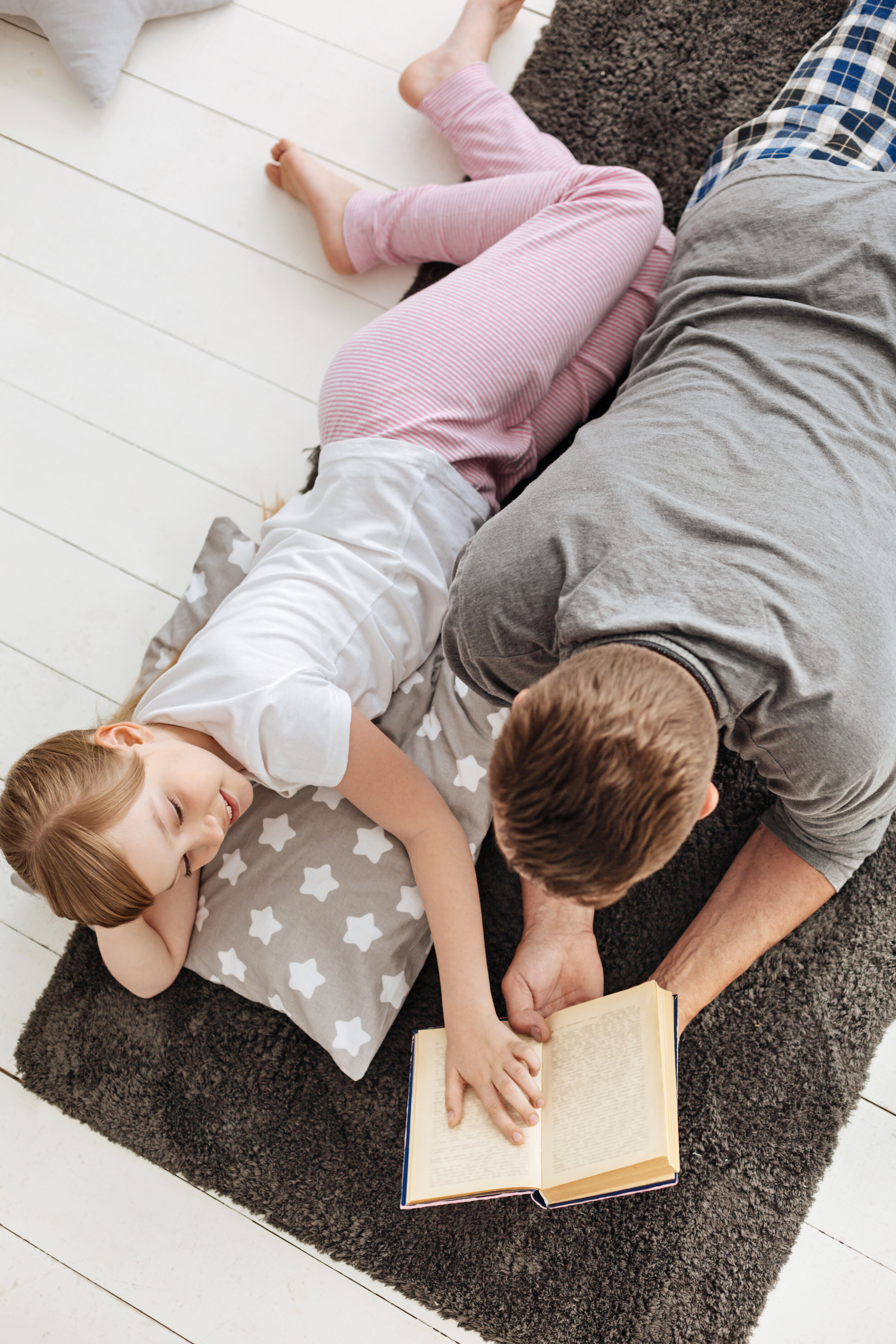
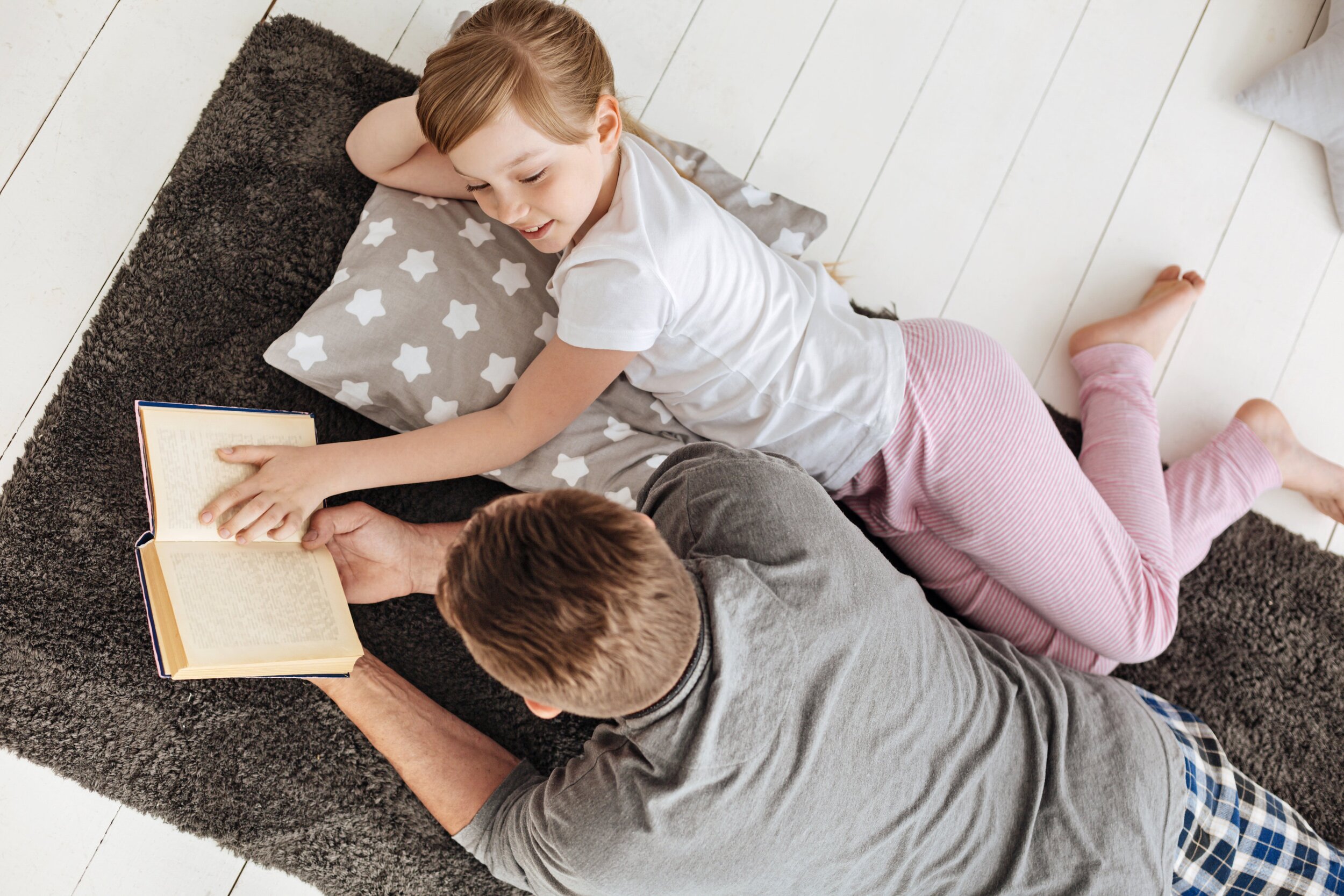




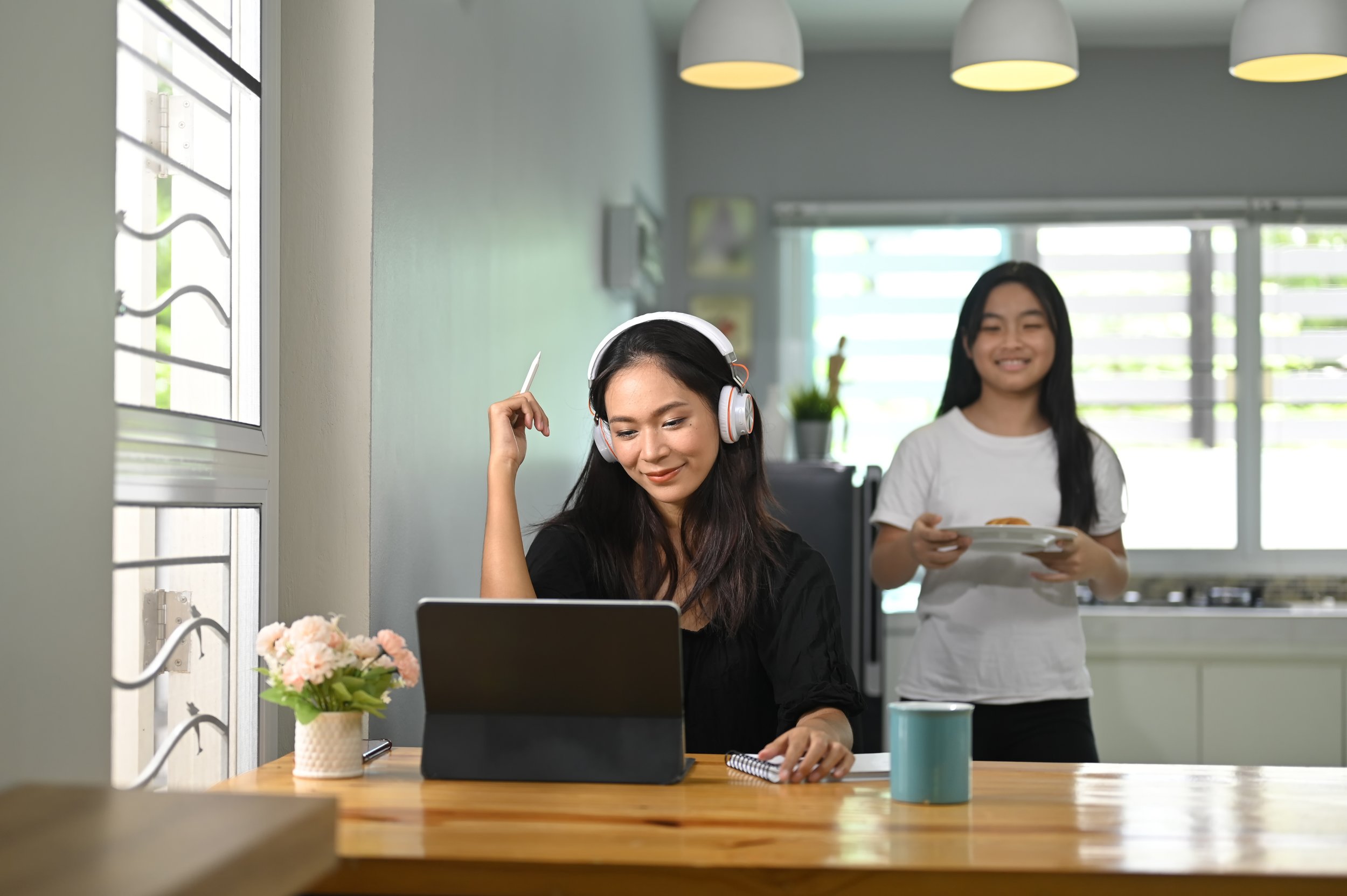

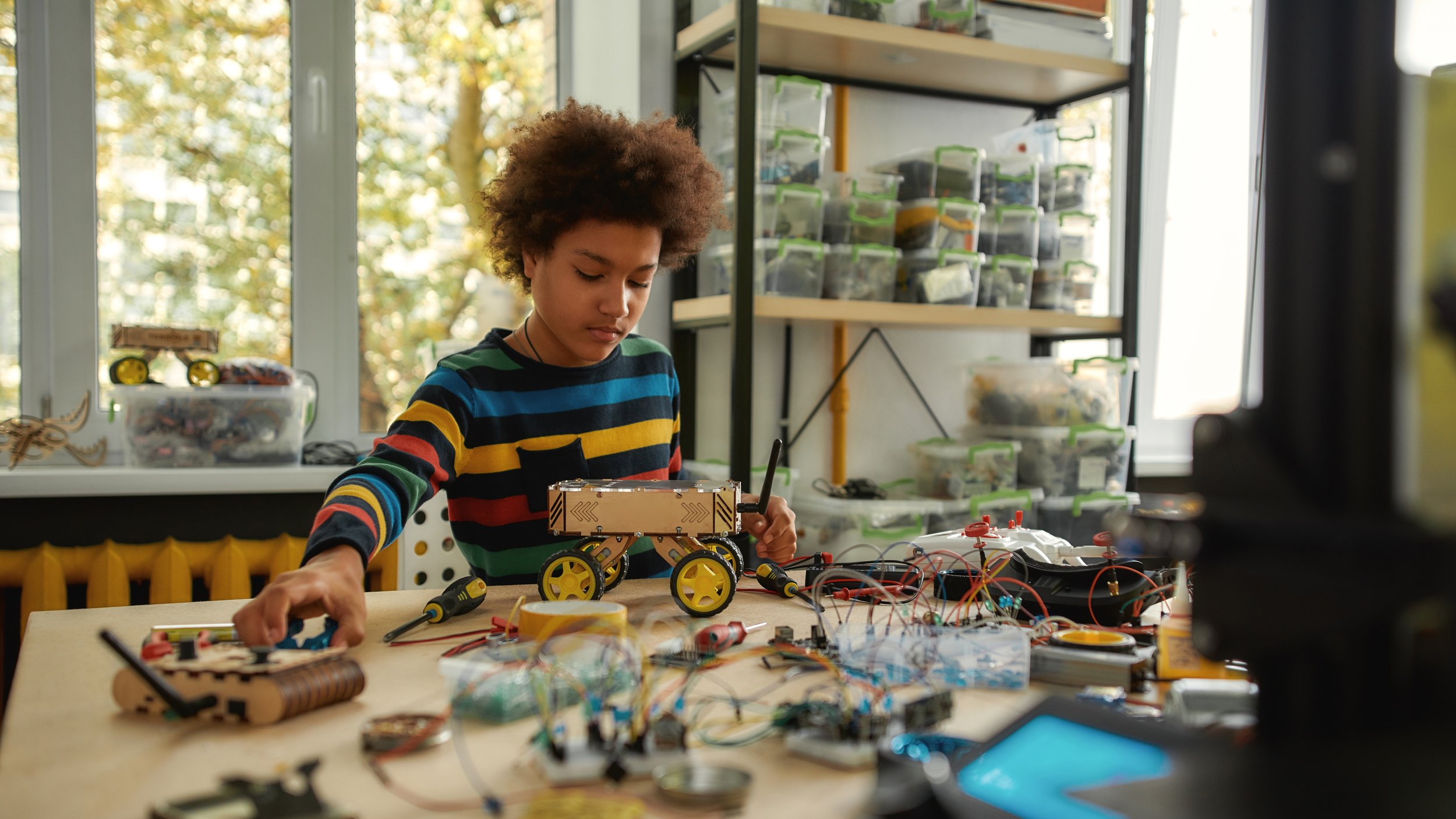







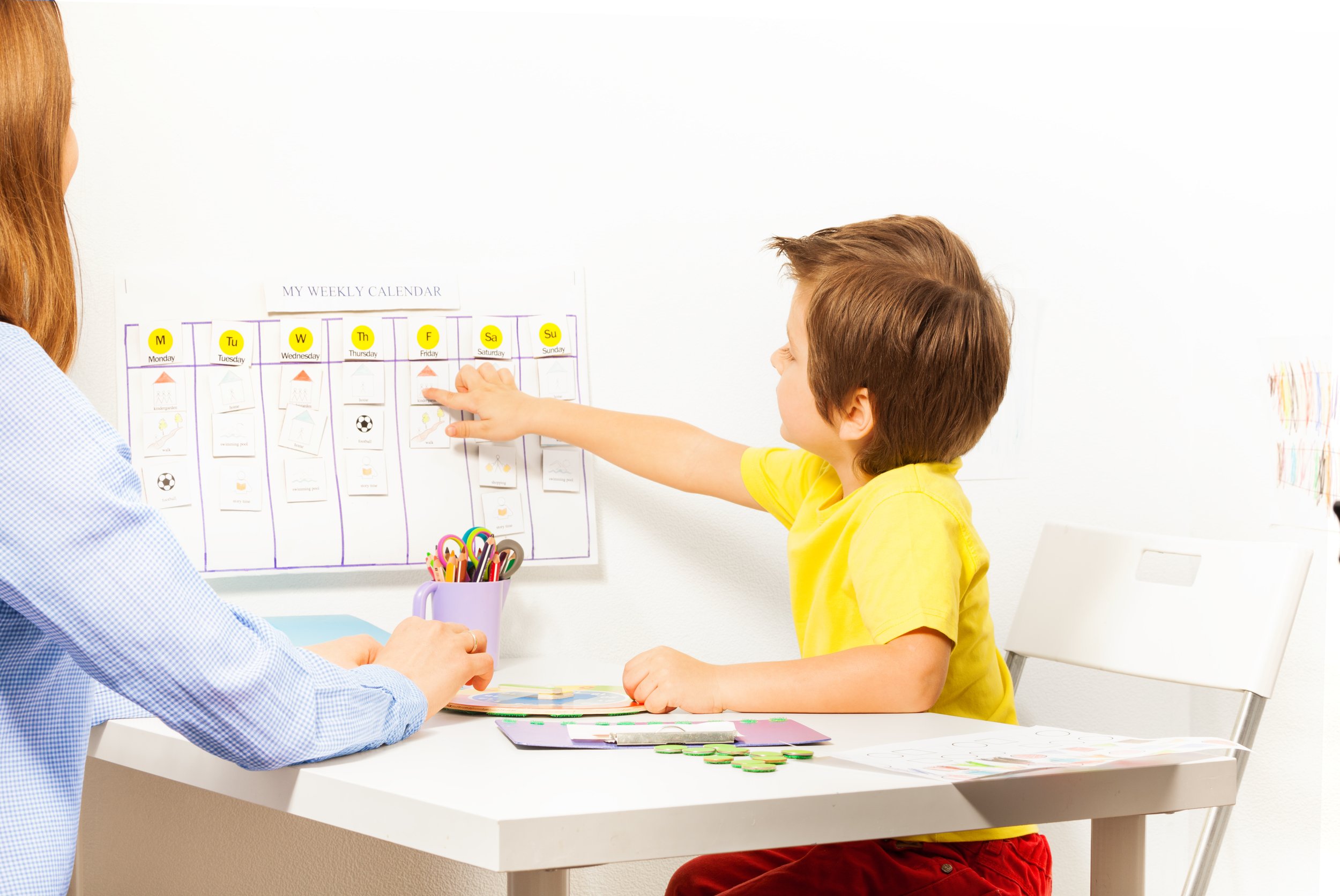


















AMY SHARONY is the founder and editor-in-chief of home | school | life magazine. She's a pretty nice person until someone starts pluralizing things with apostrophes, but then all bets are off.